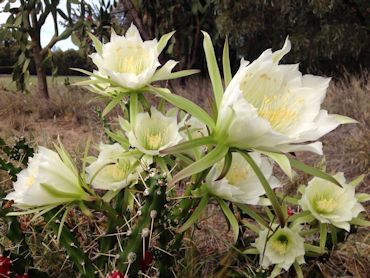
From the Mayor's Desk - 1 September 2020
« BackIt’s perhaps no surprise in a region such as ours, which consists of such a diverse range of agricultural land, that biosecurity is a primary concern. Pest plants and animals have the potential to greatly impact our primary industries, and weeds in particular can cause significant environmental harm. The Goondiwindi region forms the intersection of five major highways, which is a strong competitive advantage for many reasons – but it also adds to our biosecurity risks.
Council has mapped out a 10-year plan for the control of priority weeds across the 38,000 hectares of Council-managed roads and stock reserves. This includes 600 work days allocated per year to address Harrisia, Boxthorn, Willows Cactus, Mimosa and Tree Pear. Council will be working with land holders on the eradication of these weeds on private land, and will continue to seek resources from the State and Federal Governments for improved management of their road corridor within the region.
One particular nemesis causing growing concern for many farmers in our region is the Harrisia Cactus. In the past year, Goondiwindi Regional Council has spent 180 man days on the eradication of this invasive weed in a management program that covers more than 20 roads and highways right across the region. The core area of concern has now spread from around Goondiwindi to Moonie, North Star, Toobeah and Yelarbon.
When left unchecked, Harrisia will form dense infestations that choke out other pasture species and reduce native habitats, diminishing suitable grazing and agricultural land. Not only does this reduce productivity and create substantial additional costs, but the plant’s spines also affect stock mustering and movement, causing injuries and lameness.
All landholders in the Goondiwindi region have a responsibility under the Biosecurity Act 2014 to minimise the biosecurity risks and control weeds such as Harrisia Cactus and Boxthorn on their land. And Harrisia is controllable: with a strategic approach, neighbour coordination, effective control methods and annual follow-up, it is possible to eradicate this weed. Chemical application is considered the most effective form of control for Harrisia Cactus in our area – and with the warmer months just around the corner, we are approaching the best time of year to spray.
The species is easy to identify: spiny, fleshy stems of up to 50cm tall, ribbed lengthwise with very sharp spines approximately 3cm long. The bright red, round, spiny fruit also make it easily recognisable, as do the funnel-shaped white-pink flowers that usually open during the night.
Going forward, Council will be taking a more proactive approach in working with landholders to control invasive weeds and pests – I strongly urge all residents and landholders to remain vigilant in checking their property and taking all reasonable and practical steps to minimise the risks of invasive species on our region’s environment and economy.
- For more information about Harrisia cactus and other invasive weeds in our region, visit: www.grc.qld.gov.au/residents/rural-services/pest-weeds
Hon. Lawrence Springborg AM
Mayor
Goondiwindi Regional Council

